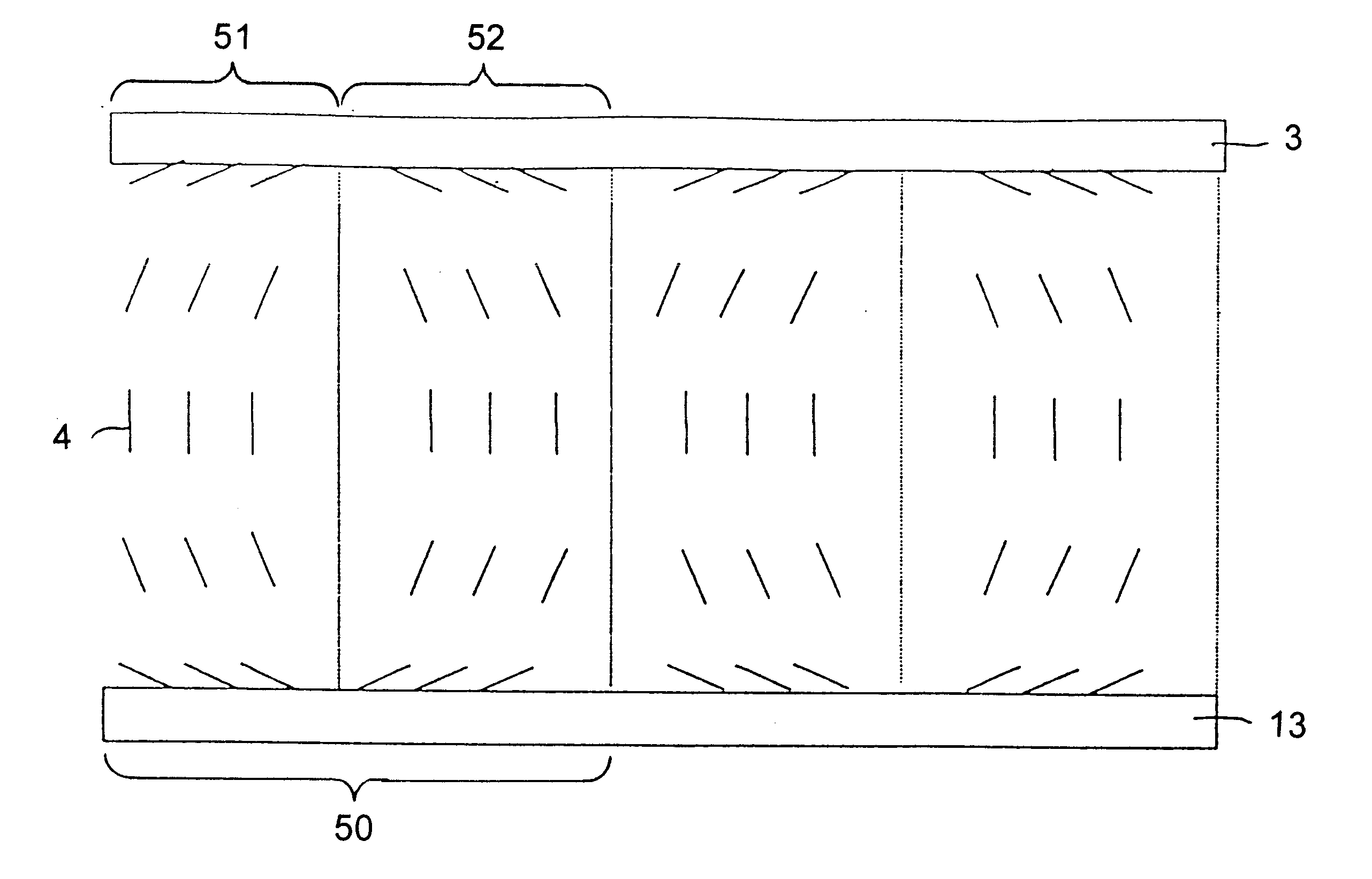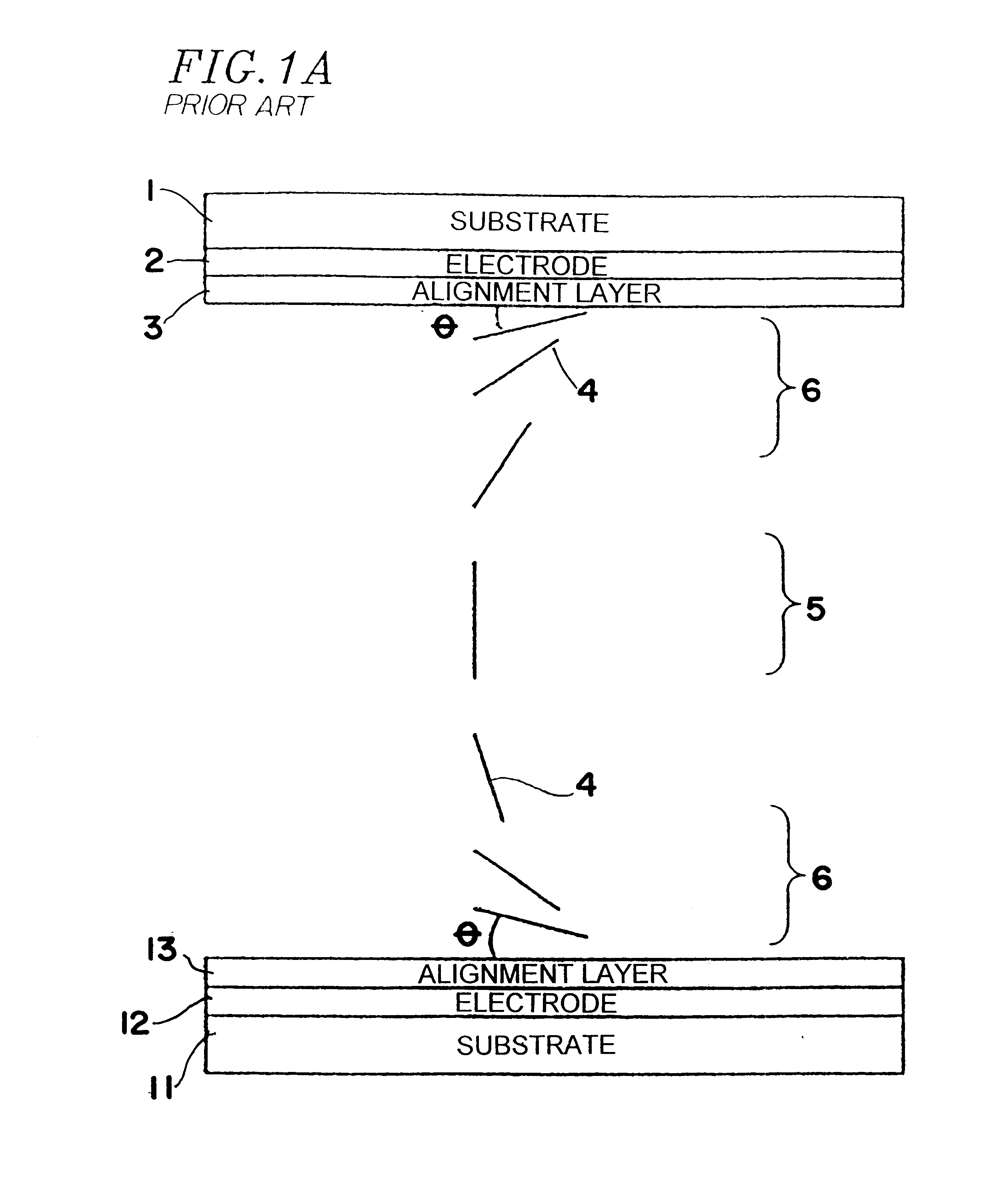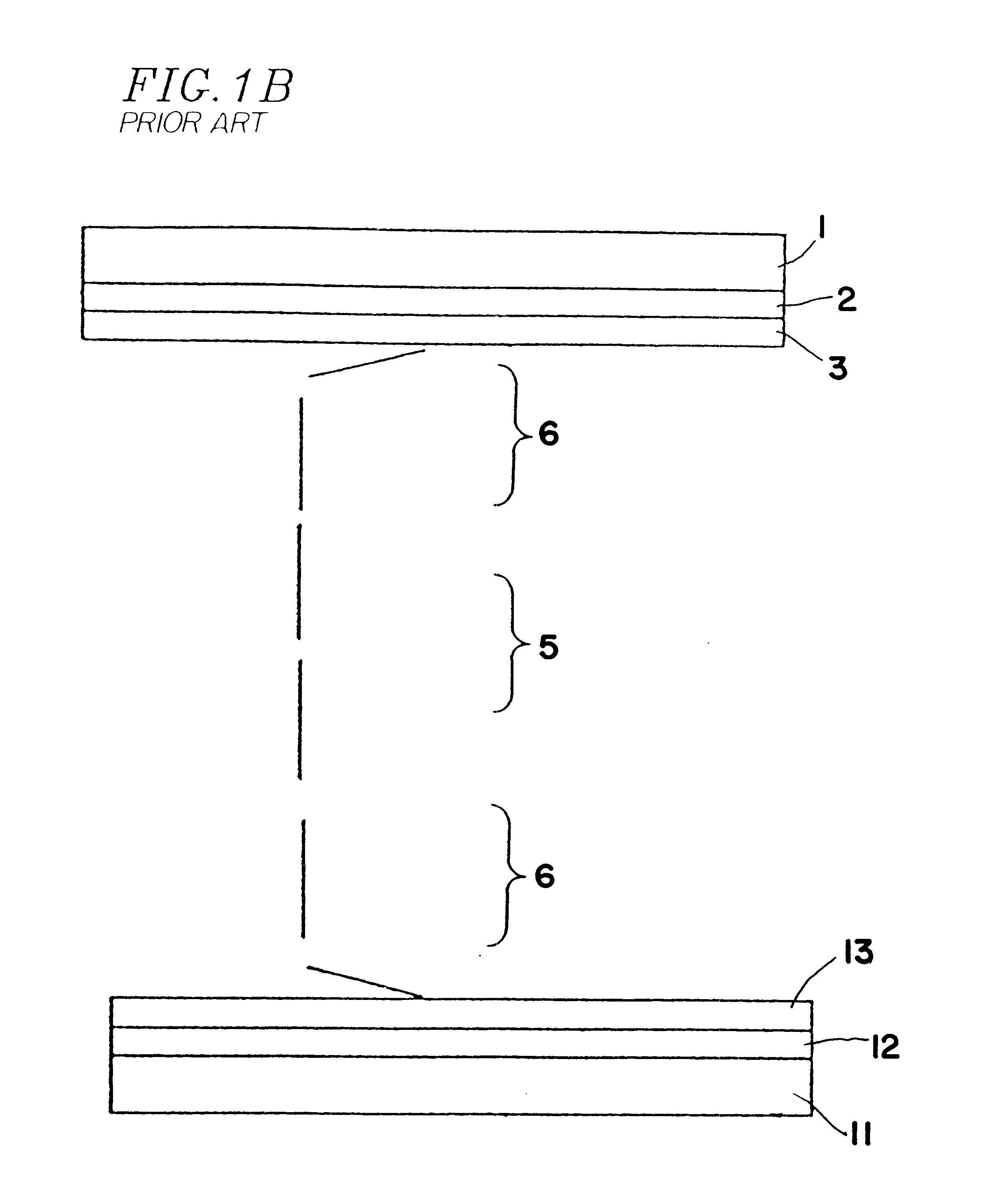Multi-domain surface mode device
- Summary
- Abstract
- Description
- Claims
- Application Information
AI Technical Summary
Benefits of technology
Problems solved by technology
Method used
Image
Examples
Embodiment Construction
Like reference numerals refer to like parts throughout the drawings.
FIG. 2 illustrates a transmissive surface mode liquid crystal device (LCD) comprising first and second polarizers 15 and 16 whose absorption axes 17 and 18 are orthogonal. The absorption axis 17 Is aligned at 45.degree. to a reference direction 19 whereas the absorption axis 18 is aligned at -45.degree. to the reference direction 19. As an alternative both a retarder of negative birefringence and a retarder of positive birefringence may be present.
A liquid crystal layer 20 and a fixed retarder 21 are disposed between the polarizers 15 and 16. The retarder 21 is of positive birefringence and is of uniform type with an optic axis 22 parallel to the direction 19. As an alternative, the retarder 21 may be of negative birefringence and the optic axis 22 may be perpendicular to the direction 19. As an alternative both a retarder of negative birefringence and a retarder of positive birefringence may be present.
The liquid c...
PUM
 Login to View More
Login to View More Abstract
Description
Claims
Application Information
 Login to View More
Login to View More - R&D
- Intellectual Property
- Life Sciences
- Materials
- Tech Scout
- Unparalleled Data Quality
- Higher Quality Content
- 60% Fewer Hallucinations
Browse by: Latest US Patents, China's latest patents, Technical Efficacy Thesaurus, Application Domain, Technology Topic, Popular Technical Reports.
© 2025 PatSnap. All rights reserved.Legal|Privacy policy|Modern Slavery Act Transparency Statement|Sitemap|About US| Contact US: help@patsnap.com



